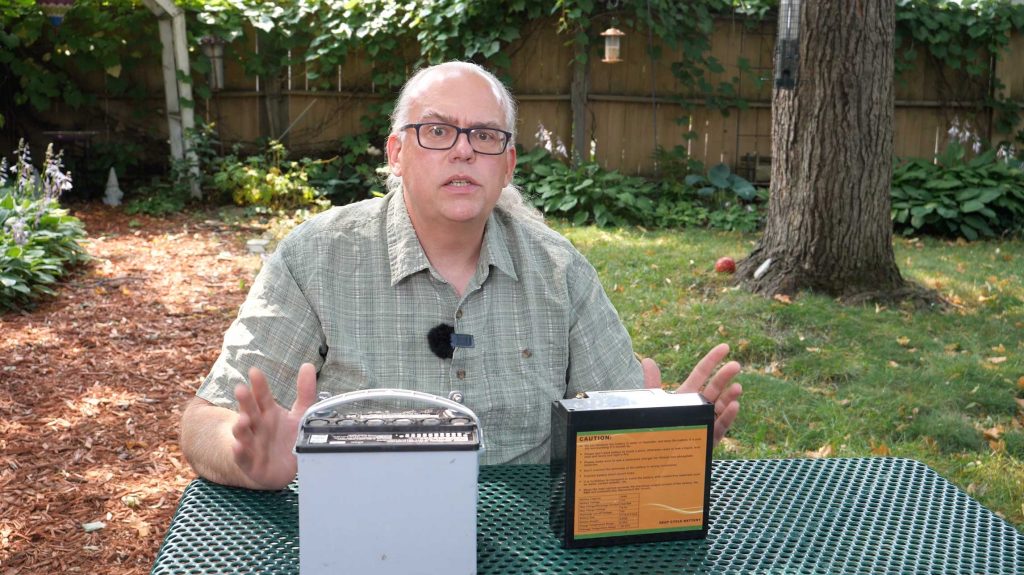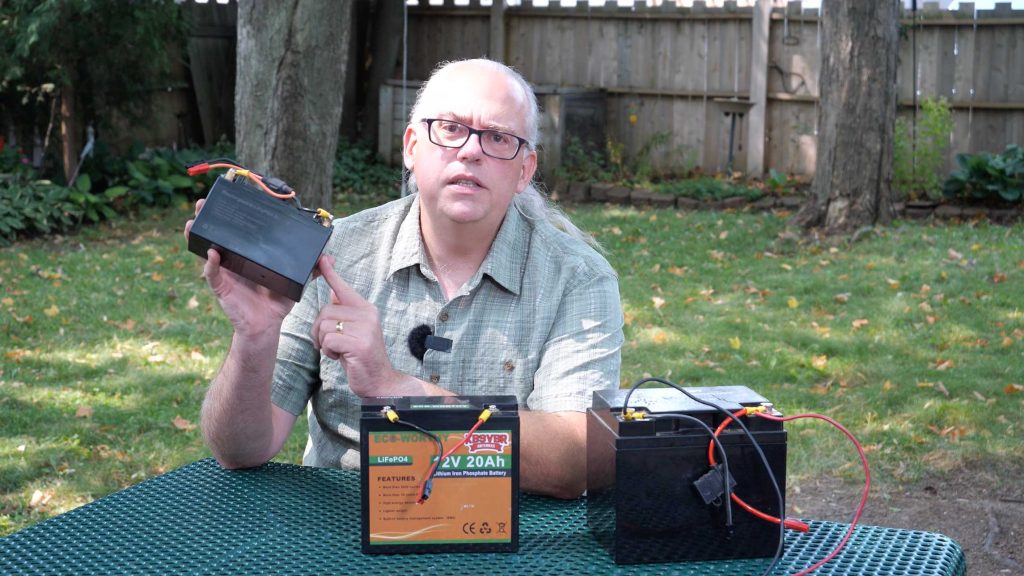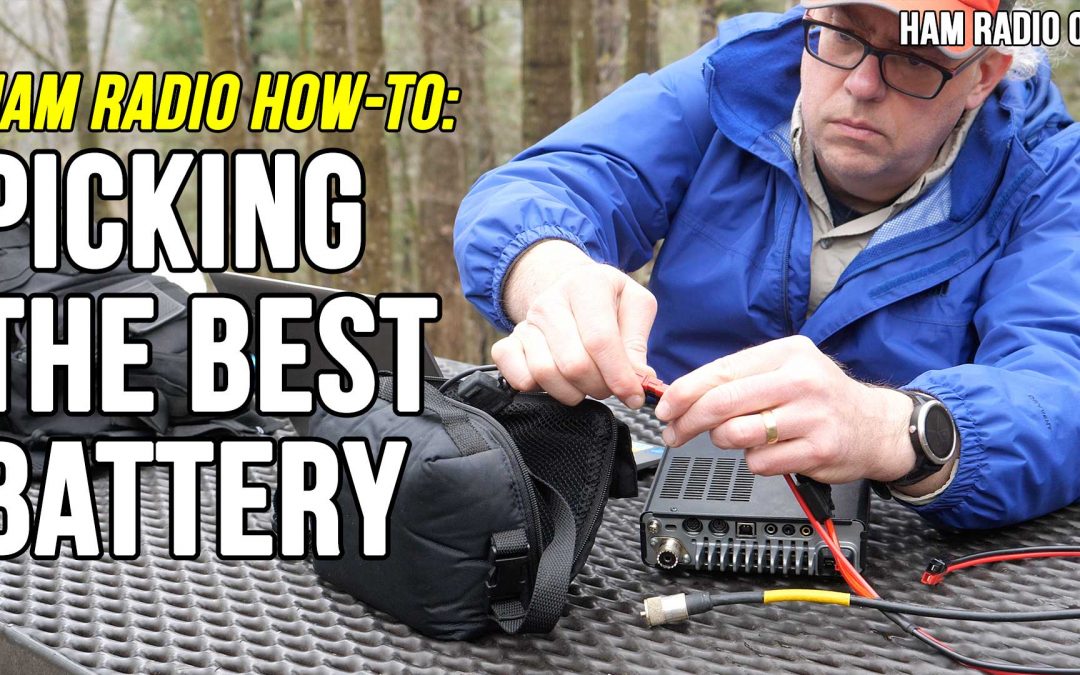A viewer recently sent me a message about batteries and what type of battery that I use for my portable operation. That’s a big question as I’m currently using three different batteries depending on the situation. But they all share a common trait, so let’s dig into battery power.
When I started operating portable many years ago, batteries were heavy and had limited power capability. A common battery, like this 30 amp hour lead acid AGM battery would give you a few hours of operation time before its capacity would drop to a point you would have to put it on a charger. Lithium technology was new and expensive, so we suffered with these inefficient, heavy batteries out in the field.
Fast forward a few years and not only is an equivalent Lithium Iron Phosphate battery cheaper than a lead acid battery, but it also has a longer service life, making the total cost of ownership even cheaper.
— Products and Links —
TalentCell 12V LiFePO4 Battery: https://amzn.to/3YebKlm
ECO-WORTHY 12V 20Ah Lithium Battery: https://amzn.to/4507NCN
Renogy 12V 50Ah LiFePO4 Lithium Battery: https://amzn.to/3Ortzdl
lifepo4 charger 15-Amp Fully-Automatic Smart Charger: https://amzn.to/3KgOldk
High Precision Watt Meter Voltage Amp Meter Power: https://amzn.to/44WJcyQ
Lead Acid vs Lithium Iron Phosphate (LiFePO4)
Now there are certain cases where a lead acid battery is a better choice, but for casual portable operating those exceptions dont’ come into play and you will benefit with using a lithium battery.
In this video, when I say lithium battery, I mean Lithium Iron Phosphate. There are many types of lithium batteries with different chemistries. Lithium iron phosphate is most common in ham radio circles as they are much safer than other forms of lithium cells. I’ll talk about the safety features in a bit.

So why lithium iron phosphate and not lead acid batteries? There are two main reasons. The first is the size and weight. The main component of a lead acid battery is, you guessed it, lead. These batteries are heavy. Approximately 3 to 5 times as heavy as an equivalent lithium battery. If you’ve had to carry a battery for any appreciable distance, you know you don’t want it to be a lead acid battery.
The second point is energy density. That’s the amount of power a battery is capable of holding. A lead acid battery can hold about 30-50 watt hours per kilogram of weight, while a lithium iron phosphate battery is on the line of 90-120 watt hours per kilogram. Related to this energy density, a lead acid battery can only be discharged to about 50 percent of it’s capacity before it needs to be recharged, otherwise damage to the cells can occur. Lithium iron phosphate batteries can go down to 80 to 90 percent of capacity, so they can deliver more energy for a longer period of time.
Also important to consider about lithium iron phosphate batteries are their safety features. Now of course any battery is dangerous in that it can hold a large amount of power, so like anything electric, treat it with respect. But the lithium iron phosphate chemistry is intrinsically safer and won’t catch on fire or explode from overcharging like other lithium batteries. These batteries also have a battery management system, or BMS to regulate the charge input and output of the battery. The BMS will make sure you don’t overcharge the battery and it will prevent you from depleting the battery down to 0 percent. The BMS will also help prevent you from drawing more current than what the cells will allow. They also provide other load balancing and cell management functions, so they are an important part of the operation of the battery.
What I use for batteries
I have three different batteries that I use with my FT-891. All of them are Lithium Iron Phosphate (LiFePO4). I started out with a 12 ah battery. At 50 watts transmit power SSB I can usually get about 2.5 hours with it.
A couple years ago, I bought a little bigger 20ah battery. I like this one a lot as it will last all weekend if I use it exclusively for phone operation, with digital or a mixture of phone and digital, it will last for an afternoon, about 3-5 hours.

In my camping trailer I had a 50ah battery, but last year I upgraded that to a 100 ah battery. With the bigger battery in the trailer I can run the refrigerator all weekend even if we are in a shaded campsite. Since I started doing more digital operation, I started to bring the 50ah battery with me on the longer outings. This will last all weekend with phone and heavy digital operation. This is also the battery I’ll grab if I’m running mobile or portable for a QSO party as I know I won’t run out of power.
With the exception of the camping trailer, which has full time solar charging, I don’t bring solar panels out in the field to charge the radio batteries. I find that it’s easier to carry a bigger battery with me than to set up a solar panel and try to move it every hour or so to catch the sun. I just pick an appropriate sized battery for the duration I’m going to operate and when I’m done, I’m done.
My favorite battery is the Eco-Worthy 20 ah LiFePO4 battery. It has really held up well the last two years and it is dirt cheap online: https://amzn.to/44oOfYV
How big of a battery do I need?
But the biggest question I get is, how large of a battery do I need? The answer depends on two things: how long will you be on the air, and what will your transmit power be. These both factor into your overall energy budget. For QRP operation, 10 watts or less, you can get by with very small lightweight batteries. If you want to transmit at 100 watts, you are going to need a battery that will cover that amount of current draw. If you are primarily phone operation, you can get by with a little smaller battery, and if you are running full duty cycle, like many of the digital mode do, then you will need more battery capacity.
A battery isn’t going to provide more than its rated capacity. If the battery says 20 amp hours, for the most part it will provide up to 20 amps of current. You’ll be able to run100 watts of phone on a 20 amp hour battery because the efficiency of a sideband signal will seldom get you to that 20 amp limit. But a 12 amp hour battery will limit the current output, cutting your transmit power.

Recent Comments